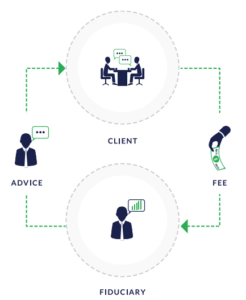
There are several ways to maximize your social security benefit. One of these is to work until you are 70 years old. Your earnings will increase and you'll be eligible for more benefits. Delaying collecting until you turn 70 is another way to maximize your benefits. You will learn how you can calculate your maximum benefit in this article.
Maximum social security benefit by working until you reach 70
If you are the primary breadwinner for your family, you may want to wait until your 70th birthday to begin receiving Social Security benefits. Your benefit will be greater than if you started collecting at 62. The reason for this is that the average American is expected to live nearly 19 years more than he or she did at 65. This means that your Social Security benefit at 70 should be 75% more than the benefit you received when you were 65.
To maximize your Social Security benefits, you need to work longer hours. The goal is to work for at most 35 years. Waiting to start receiving benefits should not be discouraged. Reducing your monthly benefit by more than 30% will reduce your monthly benefits, but you will get an additional 8% delayed pension credit for each year you delay. Remember that your benefit is limited at 70. If you're still working, it will result in higher taxes and Medicare Premiums.

You can't wait to get your SSI benefit.
It can be confusing to determine when you can start receiving Social Security benefits. You can receive almost 8% more if you delay your benefits to your FRA (full-retirement age). Even though this isn't for everyone, it can make a huge difference in your monthly checks by delaying your benefits by 12 months. However, depending on your situation, you might not be able wait that long. In some cases, workers might have to work in physically demanding jobs that make it impossible for them to wait so long. Others might just be in desperate need of the money. And still others may not have the time to wait another four years.
Your benefits may be maximized if you and your spouse are married. Sometimes it's best to claim on both spouses income records. Sometimes, spouses may choose to split their benefits so that each spouse receives the benefit at a different time. In these situations, the higher-earner may choose to delay collecting benefits until later. Visit the SSA website to find out more and receive an estimate of your benefits at different ages.
Calculating maximum social safety benefit
Social Security Administration calculates the maximum amount of social security benefits by taking into account an individual’s lifetime earnings. This includes the average increase in wages over the last 35 year. This formula multiplies these earnings to calculate the basic benefit amount. It is also known by the primary insurance amount.
SSA has a benefit calculator on their website that allows users to view a benefit estimate. This estimate may not be accurate as actual benefits. It is important that you understand how it works. The estimate is also less accurate for younger workers as compared to older workers. This is why it is important to learn how the maximum benefits are calculated, especially if retirement is planned early or later, and if your earnings have changed significantly over the years.

The maximum Social Security benefit can be determined by multiplying the average monthly earnings over the past 35 years by 90 per cent. The remaining earnings above $6,172 are then multiplied with 32%, and earnings over that amount by 15%. After you have received the initial payment amount you can either use the cost of living adjustment or delayed retirement credit to increase it.
FAQ
Why it is important that you manage your wealth
First, you must take control over your money. You must understand what you have, where it is going, and how much it costs.
Also, you need to assess how much money you have saved for retirement, paid off debts and built an emergency fund.
If you do not follow this advice, you might end up spending all your savings for unplanned expenses such unexpected medical bills and car repair costs.
How do you get started with Wealth Management
The first step in Wealth Management is to decide which type of service you would like. There are many Wealth Management services, but most people fall within one of these three categories.
-
Investment Advisory Services: These professionals can help you decide how much and where you should invest it. They also provide investment advice, including portfolio construction and asset allocation.
-
Financial Planning Services - This professional will work with you to create a comprehensive financial plan that considers your goals, objectives, and personal situation. Based on their professional experience and expertise, they might recommend certain investments.
-
Estate Planning Services - An experienced lawyer can advise you about the best way to protect yourself and your loved ones from potential problems that could arise when you die.
-
Ensure that the professional you are hiring is registered with FINRA. Find someone who is comfortable working alongside them if you don't feel like it.
What is retirement planning?
Retirement planning is an important part of financial planning. This helps you plan for the future and create a plan that will allow you to retire comfortably.
Retirement planning means looking at all the options that are available to you. These include saving money for retirement, investing stocks and bonds and using life insurance.
How to Select an Investment Advisor
It is very similar to choosing a financial advisor. You should consider two factors: fees and experience.
An advisor's level of experience refers to how long they have been in this industry.
Fees are the price of the service. These costs should be compared to the potential returns.
It is crucial to find an advisor that understands your needs and can offer you a plan that works for you.
Where to start your search for a wealth management service
You should look for a service that can manage wealth.
-
Can demonstrate a track record of success
-
Locally located
-
Offers complimentary consultations
-
Provides ongoing support
-
Is there a clear fee structure
-
Good reputation
-
It's simple to get in touch
-
Customer care available 24 hours a day
-
Offering a variety of products
-
Low fees
-
Do not charge hidden fees
-
Doesn't require large upfront deposits
-
Make sure you have a clear plan in place for your finances
-
Transparent approach to managing money
-
It makes it simple to ask questions
-
A solid understanding of your current situation
-
Understand your goals & objectives
-
Is available to work with your regularly
-
Works within your budget
-
Does a thorough understanding of local markets
-
Is willing to provide advice on how to make changes to your portfolio
-
Is willing to help you set realistic expectations
Statistics
- As of 2020, it is estimated that the wealth management industry had an AUM of upwards of $112 trillion globally. (investopedia.com)
- These rates generally reside somewhere around 1% of AUM annually, though rates usually drop as you invest more with the firm. (yahoo.com)
- As previously mentioned, according to a 2017 study, stocks were found to be a highly successful investment, with the rate of return averaging around seven percent. (fortunebuilders.com)
- According to a 2017 study, the average rate of return for real estate over a roughly 150-year period was around eight percent. (fortunebuilders.com)
External Links
How To
How to Invest Your Savings to Make Money
You can earn returns on your capital by investing your savings into various types of investments like stock market, mutual fund, bonds, bonds, real property, commodities, gold and other assets. This is what we call investing. It is important to understand that investing does not guarantee a profit but rather increases the chances of earning profits. There are many ways to invest your savings. Some of them include buying stocks, Mutual Funds, Gold, Commodities, Real Estate, Bonds, Stocks, and ETFs (Exchange Traded Funds). These are the methods we will be discussing below.
Stock Market
Because you can buy shares of companies that offer products or services similar to your own, the stock market is a popular way to invest your savings. Also, buying stocks can provide diversification that helps to protect against financial losses. In the event that oil prices fall dramatically, you may be able to sell shares in your energy company and purchase shares in a company making something else.
Mutual Fund
A mutual fund refers to a group of individuals or institutions that invest in securities. They are professionally managed pools of equity, debt, or hybrid securities. The mutual fund's investment goals are usually determined by its board of directors.
Gold
Gold is a valuable asset that can hold its value over time. It is also considered a safe haven for economic uncertainty. It is also used in certain countries to make currency. In recent years, gold prices have risen significantly due to increased demand from investors seeking shelter from inflation. The supply/demand fundamentals of gold determine whether the price will rise or fall.
Real Estate
Real estate refers to land and buildings. You own all rights and property when you purchase real estate. Rent out a portion your house to make additional income. The home could be used as collateral to obtain loans. The home may be used as collateral to get loans. However, you must consider the following factors before purchasing any type of real estate: location, size, condition, age, etc.
Commodity
Commodities are raw materials, such as metals, grain, and agricultural goods. These items are more valuable than ever so commodity-related investments are a good idea. Investors who want capital to capitalize on this trend will need to be able to analyse charts and graphs, spot trends, and decide the best entry point for their portfolios.
Bonds
BONDS ARE LOANS between companies and governments. A bond is a loan in which both the principal and interest are repaid at a specific date. If interest rates are lower, bond prices will rise. An investor purchases a bond to earn income while the borrower pays back the principal.
Stocks
STOCKS INVOLVE SHARES of ownership within a corporation. Shares represent a fractional portion of ownership in a business. If you own 100 shares, you become a shareholder. You can vote on all matters affecting the business. You will also receive dividends if the company makes profit. Dividends refer to cash distributions made to shareholders.
ETFs
An Exchange Traded Fund (ETF) is a security that tracks an index of stocks, bonds, currencies, commodities, or other asset classes. ETFs trade in the same way as stocks on public exchanges as traditional mutual funds. The iShares Core S&P 500 (NYSEARCA - SPY) ETF is designed to track performance of Standard & Poor’s 500 Index. Your portfolio will automatically reflect the performance S&P 500 if SPY shares are purchased.
Venture Capital
Venture capital refers to private funding venture capitalists offer entrepreneurs to help start new businesses. Venture capitalists lend financing to startups that have little or no revenue, and who are also at high risk for failure. Venture capitalists typically invest in companies at early stages, like those that are just starting out.